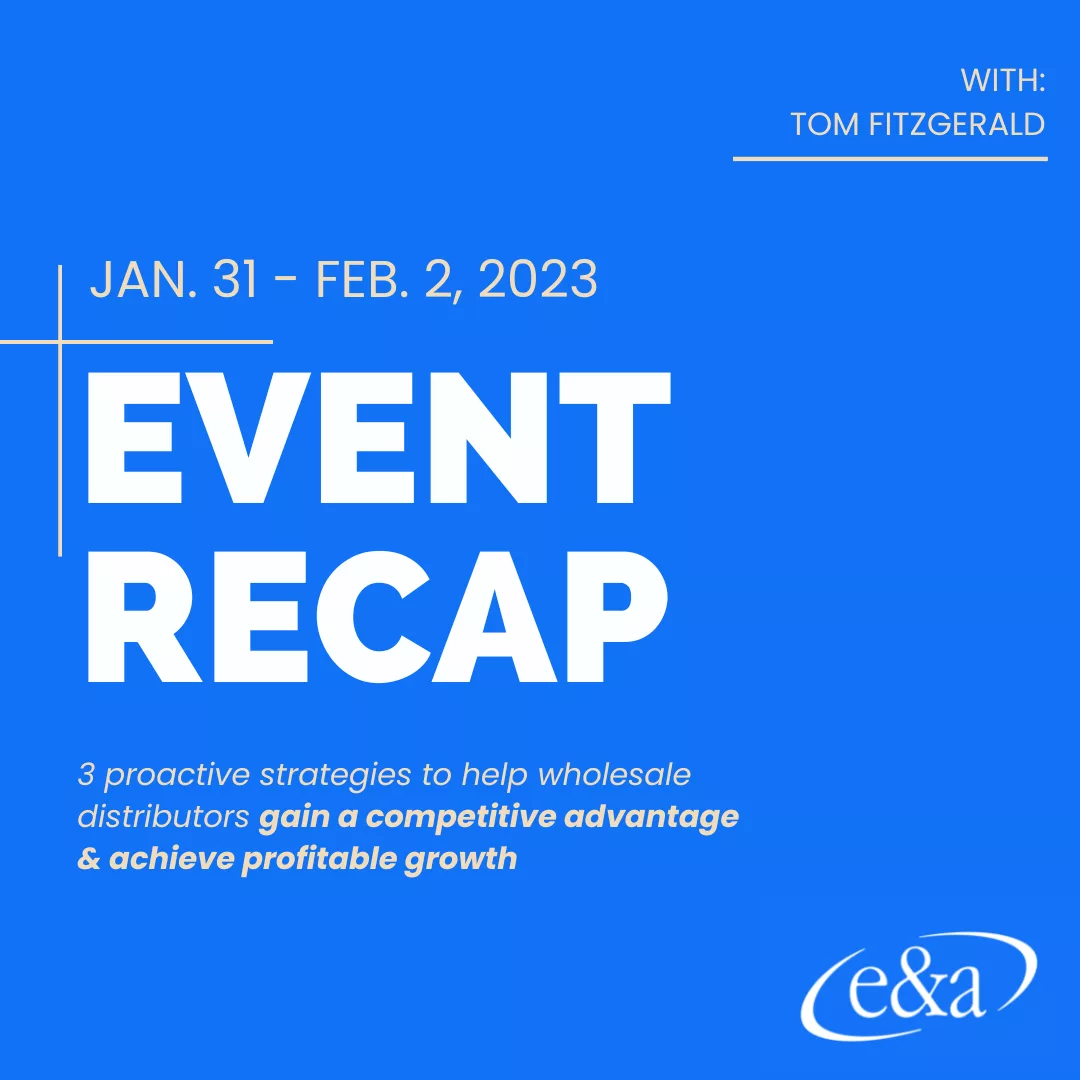
Key Themes from the NAW 2023 Executive Summit
At the recent NAW Executive Summit, one overarching message was clear: the next frontier of the wholesale distribution industry will require pioneering business leaders to navigate a still uncertain future with a steady hand and a willingness to adapt. For three days, attendees mingled, networked, and collaborated with one another. Highly respected influencers in the industry such as NAW CEO Eric Hoplin, Dr. Willy Shih, Alan Beaulieu and executives of major distributors conducted sessions that provided an abundance of insight into the distribution industry. Sessions such as Profitable Growth Strategies, Innovations & Insights from the NAW Institute Fellows, Supply Chain Visibility and 2022-2023 Economic Update went into great depth explaining how the industry has arrived at where it is today and what its focus needs to be for the future. A litany of vital information to share, but for this particular blog, I will briefly focus on three core themes that wholesalers need to bear in mind as they strategize for the coming year(s).
1. Distributors must pivot from strategies solely focused on top line revenue and market share growth to strategies of growth with profitability.
For too many decades, wholesale distributors followed rabid pursuit of growing or holding onto market share at all costs. Considering the battle they faced with the arrival of the big box e-comm distributor, it is not hard to understand why. However, decades of focusing efforts solely on maximizing fulfillment, item specialization and sku proliferation, and lowest price at the expense of margin generation left distributors with insufficient liquidity required to adapt and succeed when the pandemic disrupted their lifeline – the supply chain.
Distributors must learn from this experience and initiate strategies that support smart growth – growth that does not come at the expense of profit generation. To begin, distributors must 1) reassess the real financial contribution of their current inventory and customer mix upon which their business models are based, 2) determine how well these mixes align to the core value(s) they provide and 3) position and align themselves to markets that allow them to price their full value.
Although seemingly a daunting task, the markets have never been so well positioned to respond favorably to such strategies. Here’s why. As a result of the pandemic, no procurer can ever again assume that their supply chain is immune to disruption, resulting in a newfound appreciation for suppliers that can deliver the goods in a reliable and predictable manner. This in turn allows suppliers to price for that assurance and reliability on top of the goods they provide. The bottom line is that distributors that align their value with the right product mix and the right market and customer mix will be successful in adopting pricing strategies that grow top line revenue while generating margin to help fund that growth.
2. The labor shortage is here to stay.
A popular misconception as to why employers cannot attract candidates to meet the overwhelming demand for labor is that eligible workers, in great scale, are simply choosing not to participate in the traditional job market. However, reality does not support this presumption. Participation in the labor market for every age group is at or exceeding historical run rates. This trend is holding true all but for one age group, the “boomers.” As this generation is nearing retirement age, they are dropping out of the workforce, and the fact that they represent a large percentage of employed workers, well, their impact is significant.
In actuality, the confluence of declining population demographics with an aging “boomer” generation exiting the workforce en masse is the real force driving the extreme disparity between the supply of and the demand for labor. This labor gap cannot be easily remedied, at least not for many decades
The stresses imposed upon distributors resulting from this labor gap is significant:
- the potential for discontinuity of operations due to the loss of industry knowledge, expertise and wisdom as the aging generation(s) exit the work force
- ever-growing pressure to operate effectively and efficiently as there are fewer workers available to fill positions
The labor gap is not a temporary disruption. It is a change in the landscape to which distributors must evolve and adapt.
3. It’s time for the wholesale distribution industry to invest in updated technology.
The challenges I discussed cannot be addressed without embracing new and updated technologies.
The sales remodeling required for smart growth demands the application of sophisticated product and customer stratification as well as pricing optimization disciplines, both of which must be performed with frequency. Distributors need ready access to data to evaluate the success of their remodeling strategies.
In an era where, to my point above, the labor supply will continue to fall short of the demand, technology that integrates, streamlines, and automates processes both within the company and with its suppliers and customers is the essential driver for maintaining efficiencies and building a platform to support smart growth. And, as the competition to find labor will only intensify over the coming decade, distributors must acknowledge that the younger labor demographic is attracted to a work environment where current technologies make processes more efficient and effective.
To be sure, there is good reasoning behind why distributors seem leery of furthering their adoption of technology. In addition to feeling like they’re constantly being pushed into accepting a “one-size-fits-all” solution, in many cases the results delivered have differed wildly from the results promised.
The truth is, however, the challenges posed by the post-pandemic landscape cannot be met without embracing technology. The key to avoid repeating mistakes of past tech stack deployment experiences is to find experts who go beyond merely pushing product. Align with experts who can teach you how to evolve your business model and then help you identify and deploy the right tech stack you need to support your business.








